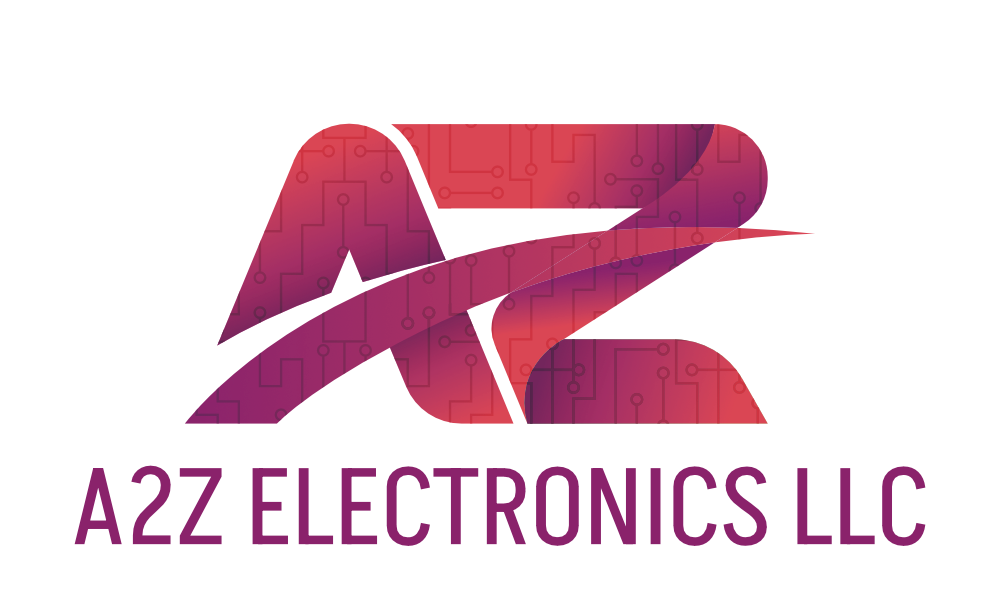10 Popular Types of Surface Mount Device Packages (SMD) in Modern Electronics
- Harshit Shah

- Jan 10
- 7 min read
Updated: Sep 2

The world of electronics is shrinking—literally. From the smartphones in our pockets to the wearables on our wrists, modern technology relies on miniaturization, efficiency, and innovation.
At the heart of this revolution are surface-mount device (SMD) packages, tiny yet powerful components that enable cutting-edge designs in electronics. These packages not only reduce device sizes but also enhance performance and streamline manufacturing processes.
If you’re an engineer, a tech enthusiast, or someone curious about the inner workings of modern gadgets, this guide explores the surface mount package types that serve as the building blocks of today’s technological advancements.
Let’s explore the top 10 types of surface mount device (SMD) packages and see why they’re essential to innovation.
Key Takeaways
SMD packages are critical for miniaturising electronics components while improving performance and manufacturing efficiency.
The blog covers 10 major SMD package types, including real-world use cases, variants, and physical dimensions.
Understanding package variants (like TSSOP, LQFP, SOT-23) helps with precise component selection and layout planning.
Includes a handy table of common resistor and capacitor sizes (e.g., 0402, 0603), essential for compact PCB designs.
Highlights automated SMD assembly techniques and how A2Z EMS can support projects from design to production.
Table of Contents
What are SMD Packages?
Surface Mount Device (SMD) packages are compact housings that allow electronic components to be mounted directly onto the surface of a printed circuit board (PCB), unlike older through-hole methods that required drilling. By eliminating the need for holes, SMD packages have enabled the creation of smaller, lighter, and more efficient devices.
These SMD packages play a vital role in surface mount technology (SMT) assembly, supporting automation, improving signal integrity, and enhancing thermal performance. They also reduce material costs and speed up production, which is why they’re found in everything from smartphones and tablets to industrial systems and medical devices.
10 Types of Surface Mount Device Packages (SMD) Used in the Modern Electronics Industry

The world of surface mount device package types is diverse, offering options that suit everything from low-power consumer devices to high-performance industrial systems. Below are 10 widely used SMD package types.
1. Small Outline Transistor (SOT)
The Small Outline Transistor package is commonly used for housing discrete components like transistors and diodes. Its compact size and straightforward construction make it ideal for high-density PCBs where space efficiency and low cost are top priorities.
SMT packages are particularly useful in signal switching and power regulation applications, offering sufficient thermal performance for general-purpose electronics.
Popular types of SOTs:
SOT-23: 2.9 × 2.4 × 1.1 mm
SOT-323: Even smaller — 2.1 × 2.1 × 0.9 mm
SOT-523: Ultra-compact — 1.6 × 1.6 × 0.7 mm
2. Small Outline Integrated Circuit (SOIC)
SOIC packages for integrated circuits require a lower profile and better thermal dissipation than traditional dual-in-line packages. With gull-wing leads extending from both sides, they are easy to solder and inspect during PCB assembly.
These packages are widely used for analog ICs, operational amplifiers, and memory chips in consumer electronics, automotive modules, and industrial control boards.
Some variants are;
SOP, TSOP, SSOP, TSSOP, QSOP, VSOP
3. Quad Flat Package (QFP)
The Quad flat package (QFP) is suitable for microcontrollers, microprocessors, and application-specific ICs. It features leads on all four sides of the package that extend outward, allowing for increased pin count without a large footprint. QFPs are favored in complex systems where performance and access to multiple I/O pins are necessary, such as in embedded systems, telecom devices, and industrial automation.
Some common styles are;
LQFP (Low-Profile)
TQFP (Thin)
PQFP (Plastic)
CQFP (Ceramic)
4. Ball Grid Array (BGA)
BGA packages are known for offering high interconnect density and excellent electrical and thermal performance. Instead of leads, they use solder balls arranged in a grid beneath the package, which helps maintain signal integrity in high-speed applications.
Ball Grid Arrays (BGAs) are extensively used in CPUs, GPUs, and networking processors, where board space and performance are both critical. Their design supports automated PCB assembly processes but requires X-ray inspection due to hidden joints.
5. Chip-Scale Package (CSP)
CSPs are among the smallest surface-mount device package types, with a footprint nearly the same size as the semiconductor die. This makes them ideal for portable electronics such as smartphones, fitness trackers, and wearable medical devices. CSPs support high-speed signal processing and take up minimal board space, but they require precision during assembly and inspection.
6. Dual Flat No-Lead (DFN)
The DFN package offers a flat, leadless form factor with terminals located underneath the package body. Known for excellent thermal and electrical performance, DFNs are used in power management ICs, RF modules, and high-frequency applications. Their compact design supports dense circuit layouts and efficient heat dissipation, making them popular in advanced consumer electronics and industrial systems.
7. Leadless Chip Carrier (LCC)
LCCs are robust packages designed for use in challenging environments. With perimeter contacts and a leadless design, they offer strong mechanical stability, which is critical for aerospace, defense, and transportation industries. Their structure also supports hermetic sealing, making them resistant to moisture and other contaminants, thereby improving product lifespan in rugged applications.
8. Plastic Leaded Chip Carrier (PLCC)
PLCCs are square or rectangular packages featuring J-leads that wrap under the sides. They are widely used for microprocessors, logic ICs, and memory chips. One advantage of PLCCs is their compatibility with sockets, making them easy to remove and replace during prototyping or repair.
They provide reliable electrical connections and are suitable for systems requiring high pin counts in a compact footprint.
9. Thin Small Outline Package (TSOP)
TSOPs are exceptionally thin and space-efficient, making them ideal for memory ICs such as flash memory, SRAM, and DRAM. These packages support high-density storage applications and are favored in consumer electronics, computing devices, and embedded systems where board height is a constraint. TSOPs also help manage thermal performance without sacrificing design compactness.
10. Wafer-Level Chip Scale Package (WLCSP)
WLCSPs allow the integrated circuit to be mounted directly onto the PCB with no intermediate packaging, offering the smallest footprint among chip packages. This format supports high-frequency performance and exceptional electrical characteristics due to the short interconnect paths.
WLCSPs are commonly used in mobile devices, power management systems, and high-efficiency LED drivers. They support high-speed assembly lines but require precise handling and inspection tools.
Common SMD Resistor and Capacitor Sizes
Don’t forget about the passives! These small but mighty components are number-coded — and the numbers matter:
Code | Metric Size | Inch Size |
0201 | 0.6 × 0.3 mm | 0.024 × 0.012 in |
0402 | 1.0 × 0.5 mm | 0.04 × 0.02 in |
0603 | 1.6 × 0.8 mm | 0.06 × 0.03 in |
0805 | 2.0 × 1.25 mm | 0.08 × 0.05 in |
1206 | 3.2 × 1.6 mm | 0.12 × 0.06 in |
Smaller sizes are great for saving space, but they’re harder to place, inspect, and rework — especially by hand.
You May Also Read: Top 10 Essential Printed Circuit Board Components
Key Features of SMD Packages List
When discussing SMD packages, several key features make them stand out:
Compact Size
SMDs are designed to save space, allowing for denser circuit layouts.
High Performance
The close proximity of components on PCBs minimises signal loss and improves performance.
Automation-Friendly
Their design supports automated pick-and-place assembly, increasing production speed and precision.
Diverse Options
A wide variety of SMD packages exists to suit different applications, from consumer electronics to industrial systems.
Cost Efficiency
Reduced material and manufacturing costs make SMDs a preferred choice in large-scale production.
Understanding these features is crucial for selecting the right surface mount package types for specific applications.
How to Choose the SMD Packages?

Choosing the right surface mount device (SMD) package size is important for performance and manufacturability. The right size ensures your components fit within the board layout while meeting electrical, thermal, and mechanical needs.
Here are a few practical things to consider when selecting SMD package sizes:
Match the Board Design
Start by reviewing your PCB layout and space constraints.
Smaller packages like 0201 or 0402 are great for compact devices, but they’re harder to handle and solder.
Larger sizes like 0805 or 1206 are easier to work with and better for prototypes.
Consider Electrical Performance
Higher power components may need larger packages to dissipate heat effectively.
Shortening connections (often possible with smaller packages) can help reduce signal loss for high-frequency signals.
Think About Assembly Capabilities
If you're using automated pick-and-place machines, make sure your selected sizes are compatible.
Tiny packages require precise placement, which not all assembly setups can handle efficiently.
Account for Testing and Repair
Very small packages are harder to inspect and rework.
If future repair or rework is expected, a slightly larger size may be more practical.
Stick to Standard Sizes
Using widely available, standard sizes like 0603, 0805, or SOT-23 ensures easier sourcing and better pricing.
It also improves the flexibility of switching suppliers or scaling production later.
SMD Component Selection and Applications
Selecting the right SMD electronic components involves evaluating factors such as electrical requirements, size constraints, and environmental conditions.
Key Considerations for Selection SMT Components
Electrical Specifications: Voltage, current, and power ratings.
Package Size: Compatibility with the PCB layout.
Thermal Performance: Heat dissipation requirements.
Applications
Consumer Electronics
Smartphones, tablets, and wearables.
Automation systems and power supplies.
Advanced Driver-Assistance Systems (ADAS) and infotainment systems.
Medical Devices
Portable diagnostic tools and implants for the medical industry.
The versatility of SMD electronic components ensures their widespread adoption across diverse applications.
Techniques Used for SMD Assembly
The assembly of surface-mount technology (SMT) components requires precision and advanced techniques. Key processes include:
1. Solder Paste Printing
Use a stencil to carefully apply solder paste onto the PCB.
Pick-and-Place
Automated placement of components onto the solder paste.
Reflow Soldering
Heating the assembly to melt the solder paste and secure components.
Inspection and Testing
Ensuring solder joints are defect-free through X-ray or optical inspection. These techniques ensure the reliability and efficiency of surface mount technology (SMT) assembly enabling the production of high-quality electronic devices.
Final Thoughts
Understanding the various surface mount package types is important for designing and manufacturing modern electronics. From compact options like SOIC and QFP to advanced designs such as BGA and WLCSP, each package serves a specific purpose.
By choosing the right SMD electronic components and utilising surface mount technology (SMT), engineers can develop cutting-edge solutions tailored to meet the demands of diverse industries.
As electronics continue to evolve, surface mount devices will remain the cornerstone of innovation. If you need expert guidance in selecting the right components or a trusted partner for PCB assembly, we’ve got you covered. Get in touch with A2Z Electronics LLC today to bring your electronic projects to life!






